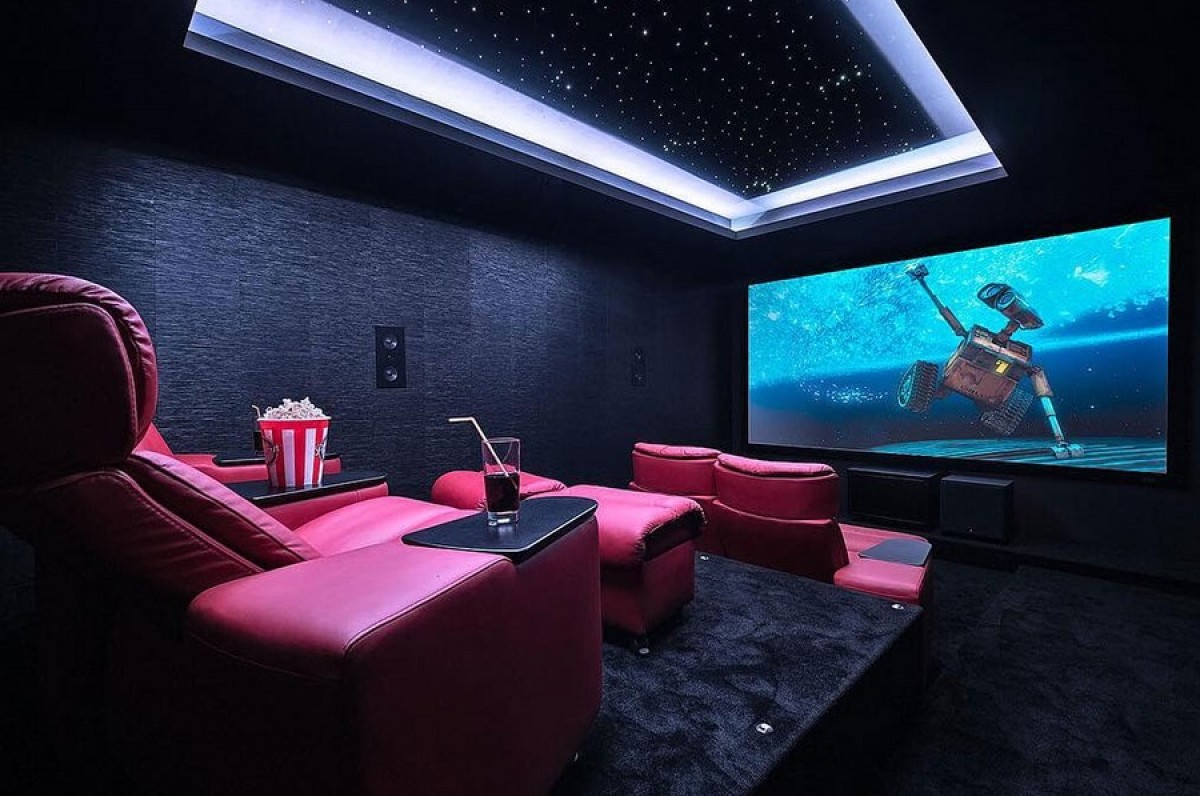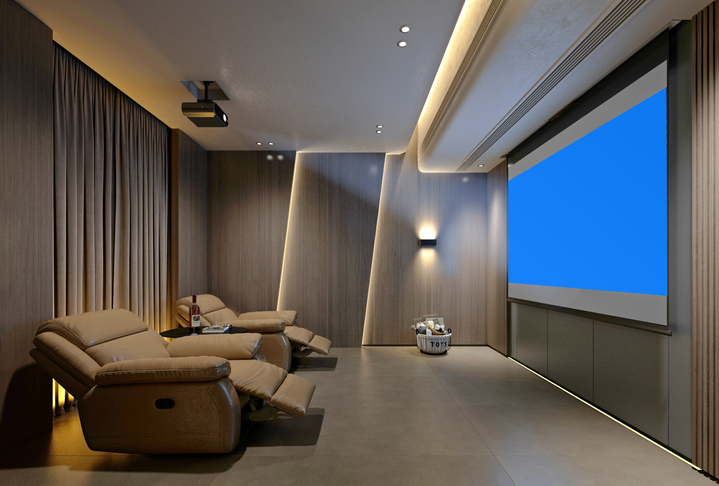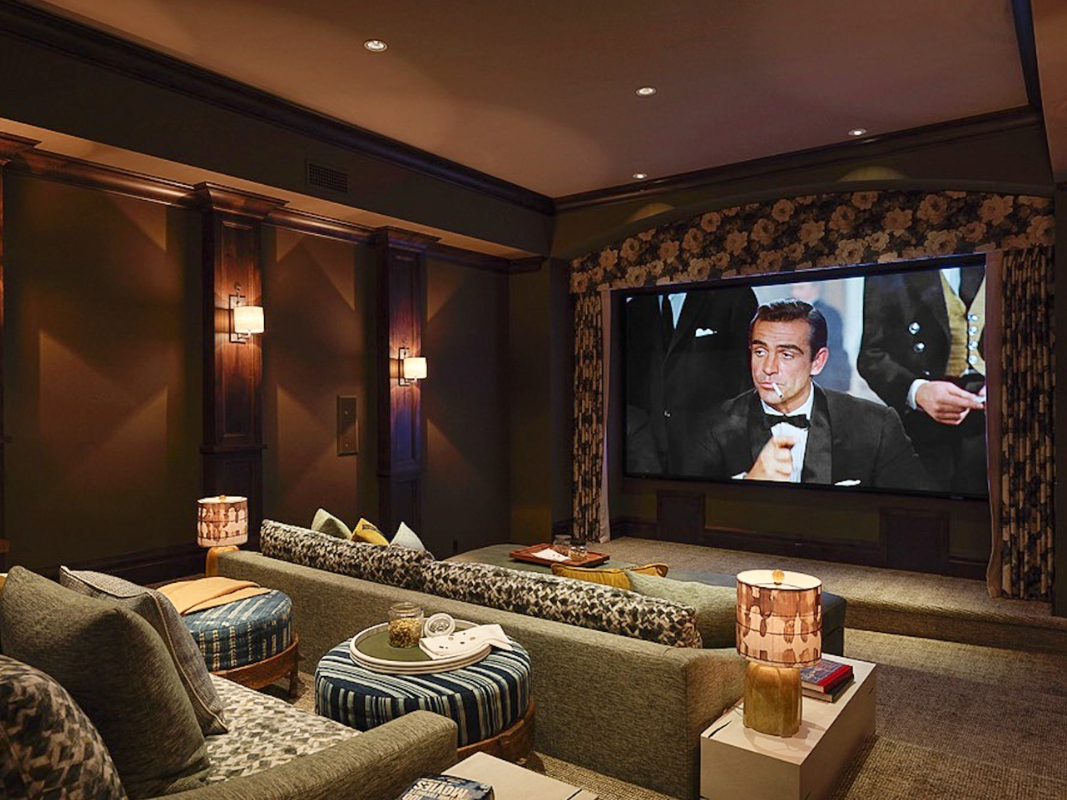Home Theater Tampa: Bringing Theater-like Experiences Into Your Home
Home Theater Tampa: Bringing Theater-like Experiences Into Your Home
Blog Article
Home Theater 101: Everything You Need to Know for a Cinematic Experience in your home
Producing a home theater that equals the motion picture experience of a commercial theater involves careful consideration of several components, including screen selection, audio systems, and area format. Whether you are pondering the perfect screen dimension or the intricacies of border audio, understanding these fundamentals is vital.
Selecting the Right Screen
When establishing up a home movie theater, picking the ideal screen can make or damage the viewing experience - home theater design tampa. The display functions as the centerpiece of your configuration, influencing picture quality, viewing angles, and total aesthetic. Key elements to consider include screen size, kind, and resolution
First, determine the suitable display size based on your area measurements and seating range. A basic standard is to rest approximately 1.5 to 2.5 times the diagonal display dimension for optimum viewing. Next off, choose in between numerous display types, such as fixed-frame, mechanized, or retractable displays, each offering distinct advantages. Fixed-frame screens commonly provide the most effective picture top quality, while motorized choices enable adaptability in room usage.
Resolution is another important element. For a really immersive experience, take into consideration a display created for 4K and even 8K content, making certain sharpness and clearness. Additionally, take into consideration the display's gain, which impacts illumination and contrast; a greater gain can enhance brightness in well-lit areas, while a lower gain might be extra appropriate for darker atmospheres.
Choosing Sound Equipment
Audio devices is a vital element of any type of home cinema system, significantly improving the overall viewing experience. The option of audio gear can determine the deepness, clarity, and immersion of sound, crucial for developing a cinematic atmosphere.
When picking audio devices, consider a surround sound system, which generally includes a receiver, multiple speakers, and a subwoofer. A 5.1 or 7.1 channel system is recommended, where the first number stands for the speakers and the 2nd the speaker, offering an immersive soundscape. The receiver is the heart of the system, managing sound and video clip signals, and need to sustain modern styles like Dolby Atmos for a boosted spatial experience.
Quality audio speakers are vital; seek designs that offer a well balanced sound profile with excellent bass reaction. Floor-standing speakers can produce richer noise, while shelf choices conserve room. Additionally, take into consideration cordless choices for simplicity of installment, although wired systems usually provide superior performance.

Ideal Seating Arrangements
Producing an ideal home theater experience hinges dramatically on optimum seating setups. The plan of seats plays an essential role in both convenience and seeing top quality, straight impacting the total motion picture experience.
First, take into consideration the screen size and watching distance. A common guideline is to place seats at a range around 1.5 to 2.5 times the diagonal size of the display. This makes certain an immersive experience without straining the eyes.
Next, elevation is crucial. If your seats is in a tiered format, the back rows should be greater than the front to prevent blockages. For flat seats, ensure that the front row is not also near to the screen, and that every person has a clear view.
Additionally, think about the setup in terms of social dynamics. Group seating can improve the common experience, while specific seats might be chosen for personal viewing.

Last but not least, focus on convenience with ergonomic seating that sustains extensive viewing durations. Incorporating recliners or cushioned seats can dramatically enhance the experience, making the home movie get more theater a favored destination for both enjoyment and leisure.
Lighting and Atmosphere
Reliable illumination and setting are vital components of a well-designed home cinema, as they substantially affect the watching experience. The best lights can boost the motion picture feel, while poor options can diminish it. For optimum results, take into consideration a layered illumination technique that includes ambient, task, and accent lighting.
Ambient lighting gives general lighting, making certain that the area is not completely dark, which can strain the eyes. Dimmer switches are highly suggested, enabling changes based on the web content being watched. Job lights, such as wall surface sconces or floor lights, uses go to this website functional lighting for tasks like analysis or browsing the room without interrupting the overall ambience.
Accent lighting can be used to highlight architectural functions or develop prime focus, adding deepness and rate of interest to the space. LED strip lights behind screens or along shelves can offer a subtle glow that enhances the visual experience without overwhelming the customer.

Wiring and Installation Tips
A tactical electrical wiring arrangement is crucial for accomplishing optimal performance in your home cinema system. Correct wiring not only makes certain high-grade audio and video signals however likewise boosts the overall visual of your space. Begin by drawing up your layout, recognizing where each part will be placed, including your screen, audio speakers, and receiver.
When picking wires, prioritize high-grade, properly evaluated circuitry to decrease signal loss. HDMI cables must be used for video connections, check this while audio speaker wire must match the specifications of your speakers and amplifier. Go with in-wall ranked cords to adhere to safety and security criteria and keep a clean appearance.

Conclusion
In recap, producing an exceptional home theater experience needs mindful consideration of numerous aspects, including display choice, audio devices, seating arrangements, illumination, and electrical wiring. By focusing on these factors, a motion picture atmosphere can be successfully duplicated, allowing for immersive seeing experiences that measure up to typical movie theater settings.
Producing a home theater that measures up to the cinematic experience of a commercial theater includes cautious consideration of multiple elements, including screen option, audio systems, and room format.When establishing up a home movie theater, picking the right display can make or damage the viewing experience. Next off, select in between various screen kinds, such as fixed-frame, motorized, or retracting displays, each offering distinctive advantages. For a genuinely immersive experience, consider a screen created for 4K or even 8K web content, making certain intensity and clearness.In summary, creating an outstanding home movie theater experience requires mindful consideration of different components, including screen choice, audio tools, seating plans, lights, and wiring.
Report this page